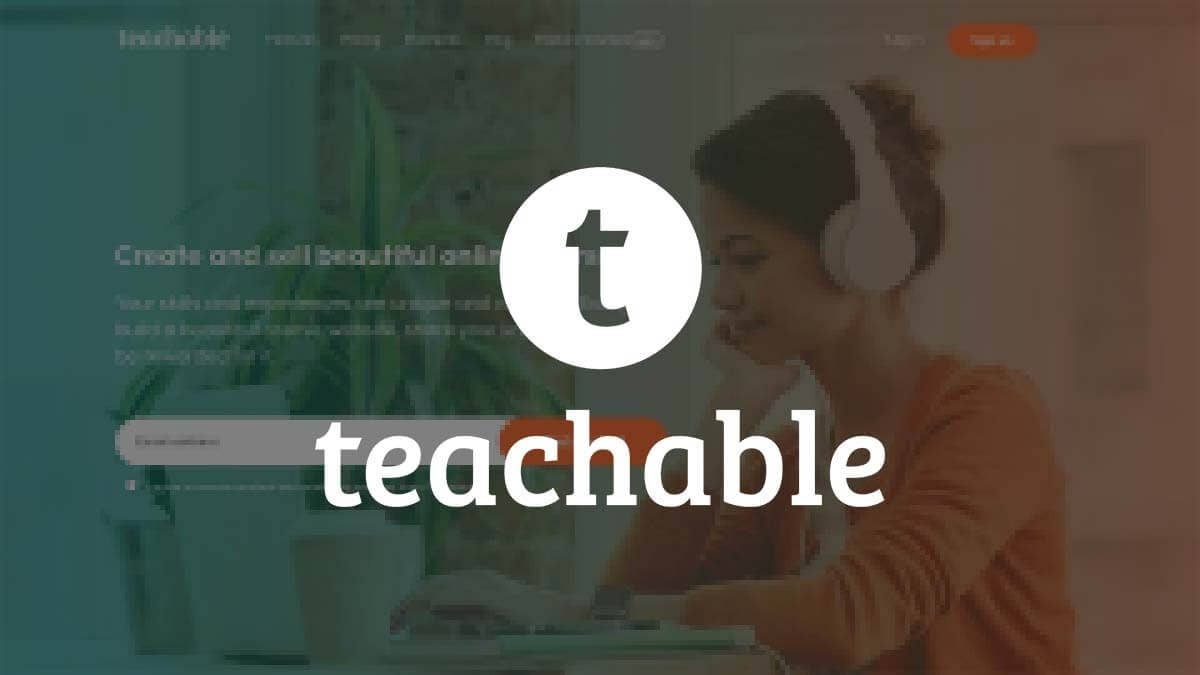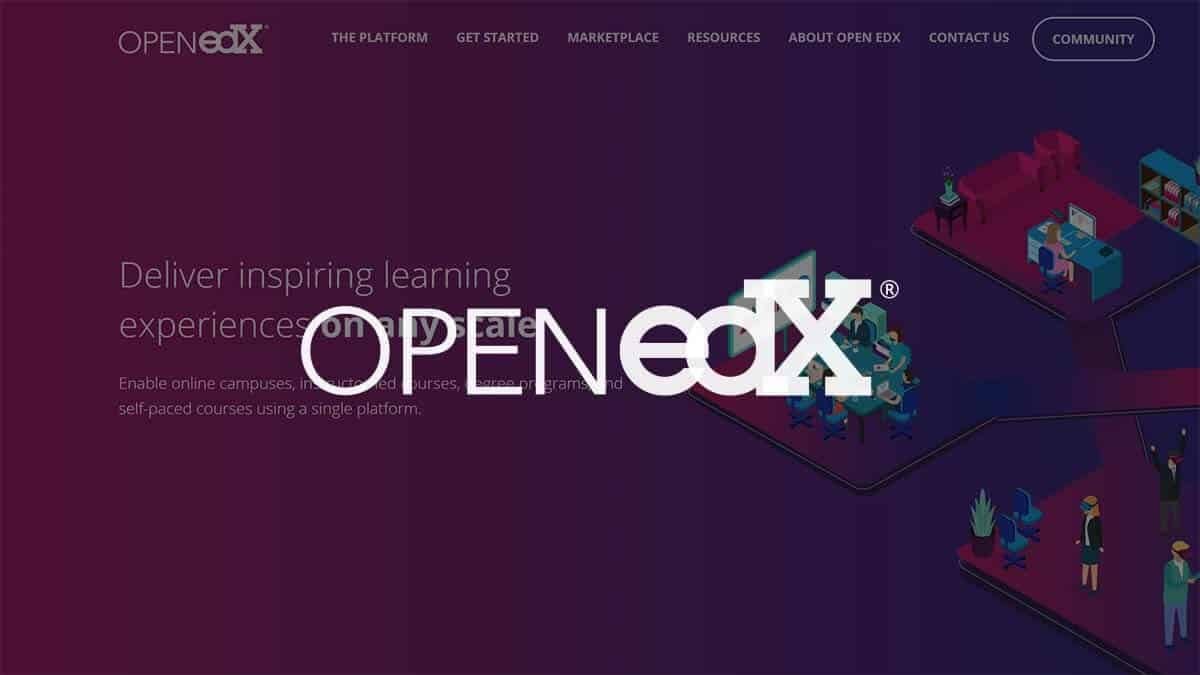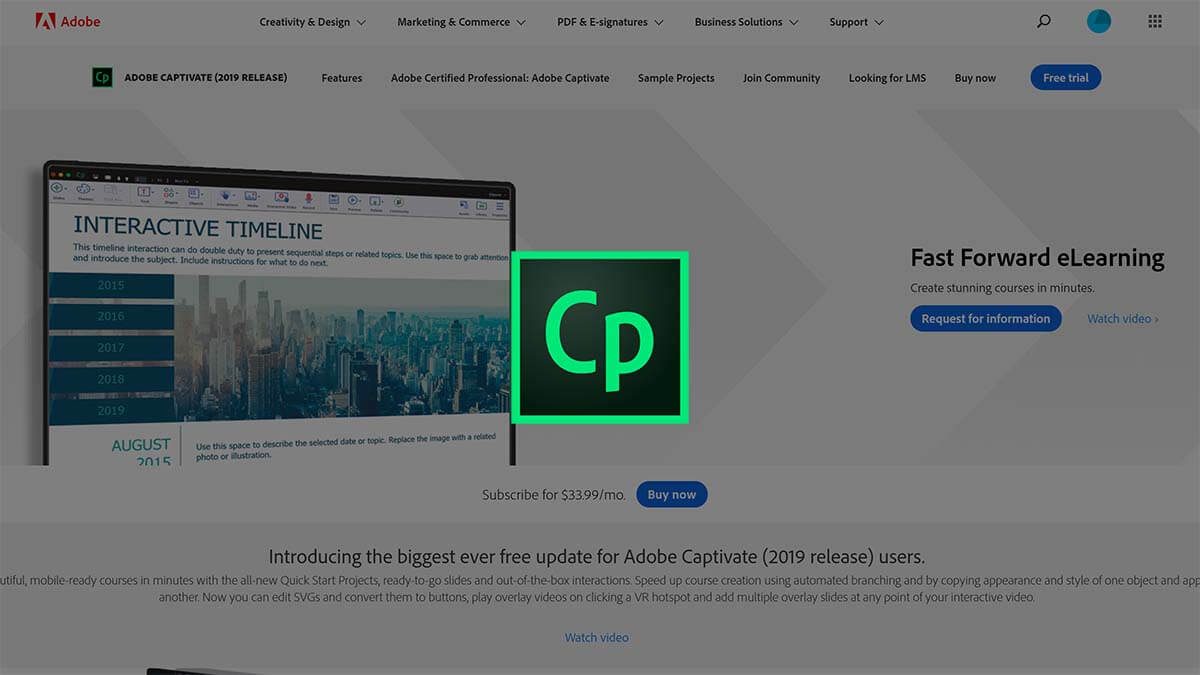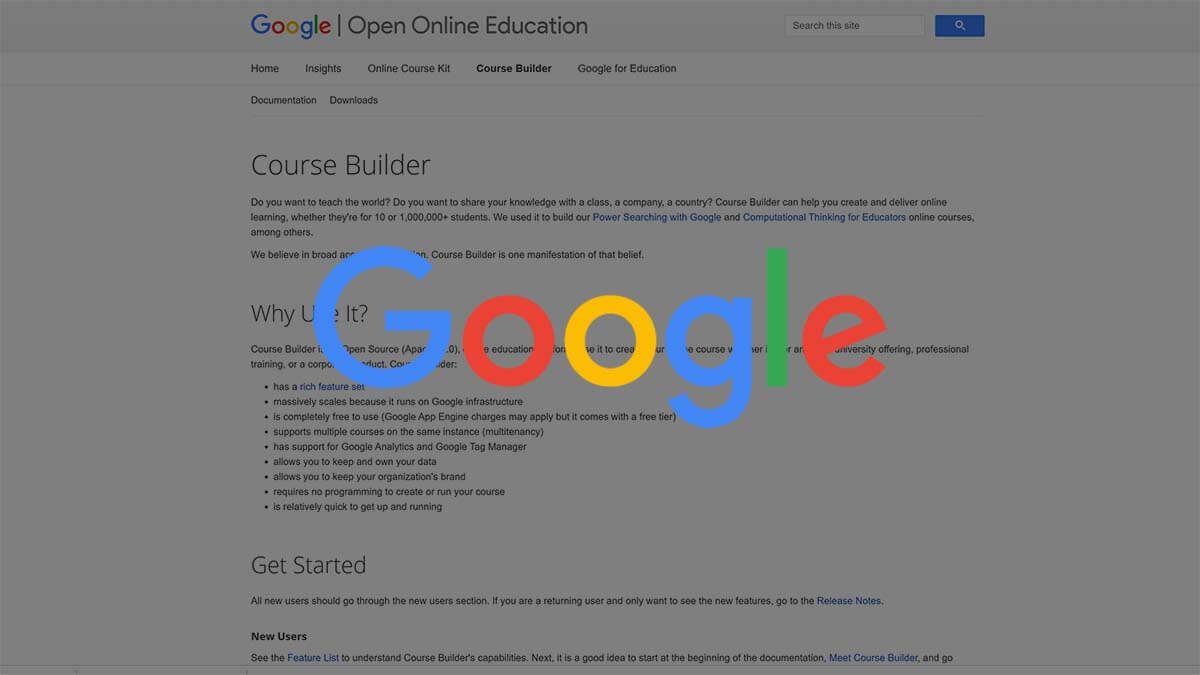Although teachers themselves are often undervalued; teaching is one of the earliest professions, one of the most essential parts of education, and one of the most selfless aspirations a person can have. Due to the teaching profession being undervalued, many teachers have started to look at alternatives: online courses. Teaching online courses can be a highly lucrative career if done right. Those who are able to create online courses which engage with students can easily earn seven figures of yearly income. It’s no wonder why online education is taking over.
With access to the Internet, it’s easier than ever to access all sorts of educational opportunities. Online course software now makes it possible for almost anyone to teach almost anything. And on the other side – it makes it possible for anyone to learn virtually anything. With online course software, it becomes possible to distribute knowledge on a global scale without the restrictions of travel and materials distribution.
If you’ve been looking for a way to share your knowledge with students online, we’ve compiled this list of the best online class software which you can use to build your own online courses. No matter what it is that you want to teach, these programs can help you share your experience with the world while making a good chunk of income at the same time.
Here are our 2022 picks for the best online course software.
Best Online Course Software
Of course, it’s important to keep in mind that you must have the appropriate knowledge and certifications before you start using an online course builder. As an educator and instructor, it falls on you to make sure that your knowledge is correct and to dutifully change or update your classes as your field of study grows. Check out our guide to creating online courses to learn more about the steps you need to take to become an excellent course creator.
Online course builders make it easy for anyone to create and sell online courses, but the responsibility of passing the correct information (especially in an age where it’s easy to spread fake knowledge) should always be at the forefront of every instructor’s mind.
Best for Standalone and Corporate: iSpring Suite

Our Rating
4.9 /5
- Massive database of tempaltes, design assets, and more
- Helpful and efficient customer support department
- Course authoring interface is intuitive and beginner-friendly
- Compatible with all major learning management systems (LMS)
- Free 14-day free trial available.
Cons
- Requires access to Microsoft PowerPoint
- No integrated course administration and marketing components
The iSpring Suite is the best overall course software we’ve ever seen. It includes not just one, but six purpose-built course authoring tools, and it brings the benefit-to-cost ratio for this package through the roof.
To read our full thoughts on the capabilities of iSpring, make sure to read our in-depth review of iSpring Suite. The new iSpring Suite 11, released in September 2022 offers even more customization options and an expanded library, making it our pick for 2022.But, if you’re short on time, here’s a quick rundown of what we think of it:
- User-friendly and easy-to-learn due to the large catalog of video documentation and efficient technical support team.
- Best-of-its-kind course template library that includes tens of thousands of slide designs, characters, location photos, and more.
- Very cost-effective as a single subscription includes six different purpose-built course authoring tools that’ll offer you everything you might need to develop interactive e-learning courses.
- Easy compatibility with all major learning management systems (LMS), such as Moodle, Canvas, and Blackboard. And, to achieve the most productive and efficient workflow, you also have the cloud-based iSpring Learn available.
- Learners can access content even while offline through the iSpring Play smartphone app.
All in all, if you’re looking for a cost-efficient course authoring toolkit without a learning curve, you’ll want to go with iSpring Suite. To see what iSpring Suite is capable of, take a look at some of these demos. And, if you’re interested in giving the toolkit a try for yourself, make sure to take advantage of their free 14-day trial offer.
Note that iSpring Suite does not integrate course administration and marketing components – if an all-in-one platform is what you are looking for, see our review of Thinkific below!
Read our full iSpring Suite review
Best for Marketing and Automation: Thinkific

Our Rating
4.8 /5
Free plan with no expiry to test out the platform
- Good balance between ease-of-use and advanced functionality
- Straightforward community feature
- A solid free tier offering, no credit card required, allowing you to create and market one course.
- You can get paid via Stripe and PayPal, even at the lowest tier
- Possible to expand course and marketing functionality via various third-party integrations
- No added transaction fees (above the ones charged by processors)
Cons
- No mobile app (but mobile-responsive course player)
- Limited onboarding and training for non-premier level package subscribers
- Lacking in accessibility features
Thinkific is an integrated online course software designed for the marketing-savvy instructor. Thinkific manages to combine the best parts of automation, marketing, and course building in a neat package. This allows you to make your course, own your content, and drive towards your audience—it also gives you the chance to earn quite a bit from doing so.
Aside from the usual suite of services required to build and market your program, this online course software also offers you an extended array of features to automate your classes like automated check-ins and certificates of completion. With these, your students will never feel like their teacher is too far away.
If you would like to hear a success story of a Thinkific user, then look no further than Jonathan Levi. He used the Thinkific online course software to build himself an online course business with a seven-figure revenue. He teaches speed reading and memory skills, but his strategies could be replicated with any topic.
It is the most straightforward platform we have tested for getting a complete content and marketing system launched. Its free tier goes beyond just allowing you to trial the features, as it is a fully functional solution for those just wanting to provide a single course. While the built-in functionality may not have everything you need for expanding into a more extensive operation, it has solid integrations giving you access to a wide range of features both for the content and marketing aspects. Following our first review of the platform, 0verall improvements and the removal of transaction fees from all plans make us recommend Thinkific for those looking for an integrated platform for their online courses.
Overall, Thinkific is a fantastic solution, and it’s one of the best online course software for automated course building – start with the no-commitment free tier to test it out.
Read our full Thinkific review
Excellent for Beginners: Teachable

Our Rating
4.5 /5
Try a Teachable Pro plan for free for 14 days (no credit card required)
- Excellent support
- Beautiful UX design for students and teachers
- Easy to set up and maintain
Cons
- Limited to the site templates
Teachable has become one of the fastest-growing online course software out there, and it’s easy to see why. With a robust customer support system, simple yet stunning UX designs, and setup process that requires no coding experience to use, it’s a good choice for anyone who wants to both teach and market their lessons. Teachable has been the source of success for many course instructors, due to its accessibility and intuitive design.
As a software for online courses that’s designed to be accessible in both setup and execution, Teachable joins the ranks of the many DIY-sites for digital content. Characterized by the ease of use, marketable distribution channels, and relatively low maintenance costs, this online course software is an excellent choice for anyone who wants to get their start in teaching online courses.
Teachable also understands the demands of the digital age, which is why it’s optimized for use across all devices. This is a critical feature that allows you to reach a wider audience for your lessons and gives your course accessibility from most devices in use today.
If you would like to see what an online course website created through Teachable looks like, then check out the following examples, which were created with the help of Teachable’s online course software:
For beginners, Teachable has some of the best online course software. It’s intuitive, easily understandable, and the end result is fantastic. If you want to start publishing online courses as soon as possible without prior experience – go with Teachable. However, although their pricing plans are somewhat cheaper (if you don’t take added transaction fees into account) we find that Thinkific is equally easy for creating your course, have a more generous free tier, and is a better choice for growing your business to scale.
Read our full Teachable review
Good alternative: LearnWorlds

Our Rating
4.6 /5
- White-label branding
- Engaging and effective e-learning experiences
- Easy-to-use website builder
- Integrated sales funnel
- Seamless integrations
- 360° customer support
Cons
- Limited features for the Starter plan
- Minimal customization for learners
- Limited third-party integrations
- Somewhat steep learning curve for instructors
We covered LearnWorlds’s online course-building features in detail in our review of LearnWorlds, but here’s a quick rundown:
- It’s an all-in-one course software. This means that if you invest in LearnWorlds, you will not need to spend extra money on subscriptions to Mailchimp, WordPress, ClickFunnels, and other software that’s usually required for managing a serious online business.
- It has a straightforward interface for creating courses course software we have tried. It’s user-friendly, and launching new courses together with landing pages is a breeze.
- Easy to set up integrations with major external platforms for marketing and communications. However, as LearnWorlds replaces them, you will likely not even need to set up many integrations.
- An excellent white-label experience that lets you leverage your own brand using the platform’s capabilities.
Read our full LearnWorlds review
Top Open Source Pick: Open edX

Our Rating
4.2 /5
- Open source online course software
- Full of customization options
- Responsive support team
Cons
- Somewhat overwhelming to get started with
- Requires a large time commitment to learn
Open edX is an online course software created by Harvard and MIT as a way to make learning more accessible around the world. As the only massive open online course (MOOC) provider that’s both non-profit and open source, this software is ideal for an instructor who wants to craft a complete, customized, and comprehensive learning experience for free.
As a software built by educators themselves, Open edX carries all the essentials that you need to start building your very own online courses. It might take a little time to get used to how the system itself works, but the variety of features, plugins, support and customization options make learning Open edX a definite investment.
Since the software itself is open source and free for use, it offers a wider range of options for any educator to use, either from the teaching or the learning end. Of course, these very same options might prove a little challenging to the beginner (or at least, someone who isn’t too familiar with online platforms,) which is why the software helpfully offers both self-managed and fully-managed options.
If you prefer to go self-managed, then you will get the course software either as source code or as a deployable image. You will have three different distribution options to choose from, which are:
- edX’s distribution
- IBM’s distribution
- Bitnami’s distribution
If you would like a fully managed online course software solution which does more of the work for you, then Open edX offers the following four choices:
Not all of these software solutions are free, but some of them offer free 30-day trials, so be sure to check up on each of them individually. We consider Open edX to be the best online course software which you can use for free.
Good for Interactive eLearning: Adobe Captivate

Our Rating
4.1 /5
- Specializes in interactive eLearning content
- Immersive virtual reality capabilities
- Responsive user interface design
Cons
- Steep learning curve
- You'll need to buy additional software to market courses
Adobe Captivate started out as a screen capture tool, but after numerous acquisitions it went through some transformations, eventually becoming a full-fledged e-learning software. With a focus on interactivity and visual stimulus, Adobe Captivate truly aims to captivate the audience.
Bridging the gap between the student and their environment, Adobe Captivate is a forerunner in pushing new technology to provide an immersive learning experience. If you’re an instructor who wants to make the most out of cutting-edge technology, this is the builder for you.
One of the hallmarks of the Adobe Suite is the quality when it comes to UI and UX. Adobe Captivate takes the relatively new experience of online course software and pushes it even further by providing support for technologies that can literally show the student in practice, rather than simply relaying information.
Aside from VR support, Adobe Captivate also allows for real-time interaction with your study material. Make your lessons far more engaging by allowing your students to experience your subject matter first-hand, and crafting new and interesting study tools to help them learn.
If you like visual course materials and you want to captivate your audience with more than just text content, then Adobe Captivate should be one of your top online course software choices.
Easily Scalable: Google Course Builder

Our Rating
3.9 /5
- Easily scalable with Google's suite of services
- Open source and free to use
Cons
- Outdated and not updated since 2013
- Lack of support
Google’s Course Builder was created to make access to education—more specifically, tech-related education—easier for students around the world. With the growing challenges and requirements to keep-up in the information era, it’s a highly useful online course software to both share and discover new sources of knowledge.
The biggest benefit to using this online course builder is that you’ll have the full use of Google’s suite of services and support towards building your course. It’s intuitive to use but admittedly requires a little tinkering in order to get the full benefit.
With the trademark ease-of-access philosophy that Google espouses, this online course builder is very user-friendly. It’s also completely free and can be very scalable which makes it very handy for subjects that are designed to reach a wider audience.
The only downside is that it comes in the form of source code. While this will not be a problem for the tech-savvy course builders, it could be a problem for non-techies who don’t know how to put the source code to use. Google’s Course Builder does come with some excellent documentation, though, so with enough effort, anybody should be able to get the hang of it.
In terms of scalability, Google’s Online Course Builder is one of the best software you can get your hands on. It’s not the most beginner-friendly, but it’s top quality.
A Beginner's Guide to Picking a Good Software for Building Online Courses
While these online course builders may differ in how they allow you to build and teach your course, all of them come with the features necessary to build something that will engage your students. Whether you’re looking to push the boundaries of what education can be, or want to teach a classic lesson in an innovative way, or maybe your just looking to share your experiences; each one of these online course software can help you teach the way you want.
With that said, there is a multitude of ways to create courses with online course software, and it can be a little challenging to figure out what works for you. While we’ve certainly narrowed it down to a couple of key recommendations above, there are still questions you should answer before settling down with particular software.
These are the most important factors you should consider when picking software for creating online courses and online training:
Monetized vs. Unmonetized Courses
There are usually two reasons why instructors would start using online course software: either they want to take up teaching as a hobby or a supplement, or they’re looking for online teaching to be another source of income. Being clear about why you’re teaching can go a long way to establishing what your expectations are from the toolset you’ll choose.
For those looking to teach as a hobby, it’s important that you choose a builder that will allow you to customize the course as much as you want. Offering an accessible teaching experience means taking your student’s welfare in mind more than anything else, and you’ll need the corresponding online course software that can meet that need.
Those looking to generate income from online courses should use a software that also supports course marketing. Competition is fierce when it comes to offering online education, and there are some companies and sites that can help you get the numbers that you’re looking for.
Time Commitment
Another key consideration is the amount of time you have to devote to teaching a class. Like their real-life counterparts, online classes will always require some level of participation from the instructor—you can’t just give away your reading material and expect your students to teach themselves.
Fortunately, unlike teaching in real life, online course software provides you with additional avenues to automate the process, like consultations, assignment checking, and even group dynamics. This allows you the freedom to focus on the things that really matter in the course, and become a more effective instructor in the process.
This also means that you should choose the program that can best accommodate your need when it comes to time constraints. If you need to set up and launch a course as quickly as possible, choose your software accordingly. On the other hand, if you have the time to spare to fully customize your learning experience, pick an online course creator that can give you that freedom.
Course Subject
Your subject should also be of heavy consideration when picking a compatible software. There is some online course software that can work better for certain subjects than others. Don’t get too focused on the fancy features of certain software, your primary concern should be teaching your lesson effectively.
Taking the time to consider how well your subject can be communicated can be beneficial to your students.
Community & Support
While the process of setting up and teaching an online course may only take one person, the community that springs up from your lessons is far from solitary. Just like any faculty in their own department, each software provides a community that can support your needs, technical or otherwise.
Having an active community and support group can help add value to your classes, either through technical support or instructor feedback. The right community will also provide valuable insight into how you can craft and perfect your lessons.
This system benefits your students as well. There’s no need for them to be isolated from their fellow classmates—having a software that allows them to work and engage with each other as a group enriches their learning experience and allows you greater freedom when it comes to your teaching options.
Technical Skills (or a Lack of Them)
Finally, there’s the question of whether or not your technical skills match with the services required when it comes to operating the software.
Technical skills aren’t a necessity—in fact, it’s not uncommon for online instructors to either hire someone to take care of that area—but it’s a useful skill to have when you need to make changes to your curriculum on short notice. As you gather more knowledge to build your courses, it’s a good idea to be familiar with the tools that you’ll be using to build it.
And if you do decide to learn some beginner’s technical skills like coding, you can always consult other courses for getting started in that direction. While this might mean that you’re both learning a field and teaching one, it’s definitely an investment that you’ll be thankful for. And who knows? You may just be able to add that to your list of online courses to teach.
Accessibility (!)
The existence of online course software and online classes solves an inherent problem of education: the issue of accessibility.
Before the internet, it was almost impossible to find such a wide variety of classes with such a low barrier for entry. With the internet, it becomes possible to bridge that gap between knowledge and those who seek to learn it.
Education is constantly evolving, and online course software will be a major part of how it will define itself in the future. For educators and students alike, these online course builder platforms will not only allow for a more informed society but pave the way for even more innovative and accessible forms of education.
In this information-driven world, teaching has never been easier. So if you’ve ever thought of becoming a teacher, there has never been a better time than right now. We hope this list has helped you along your path toward sharing your knowledge with the world!



